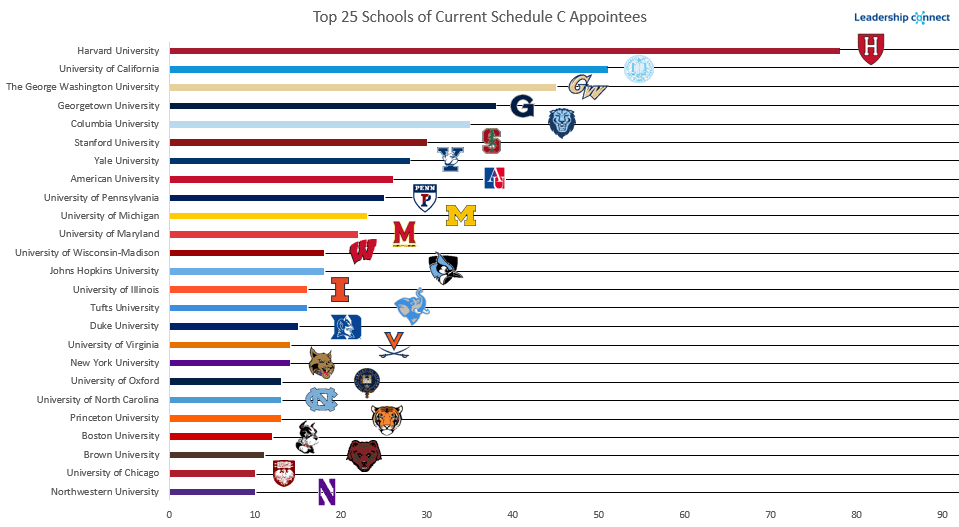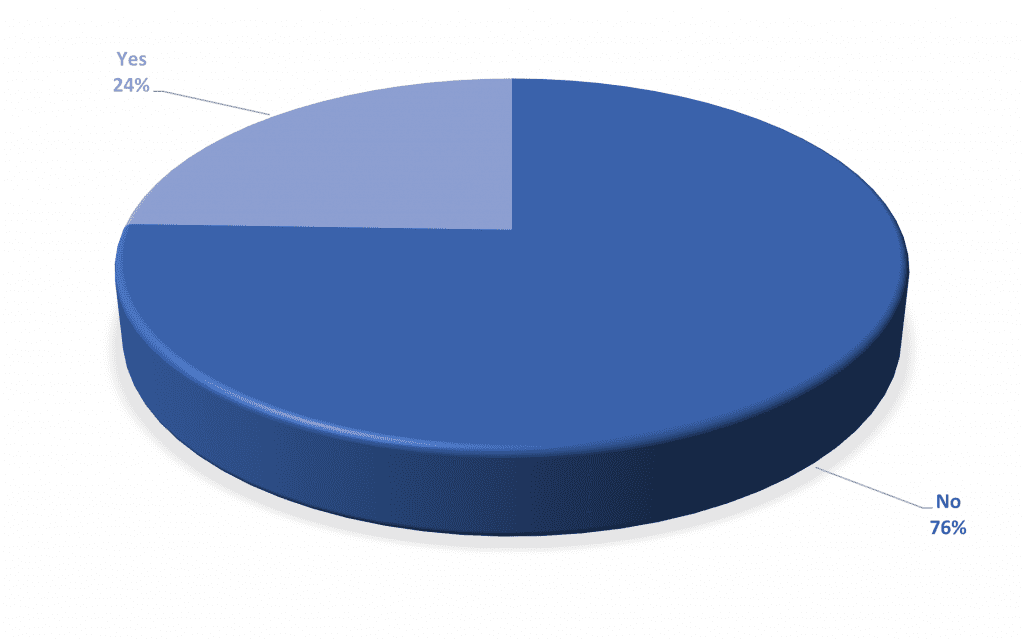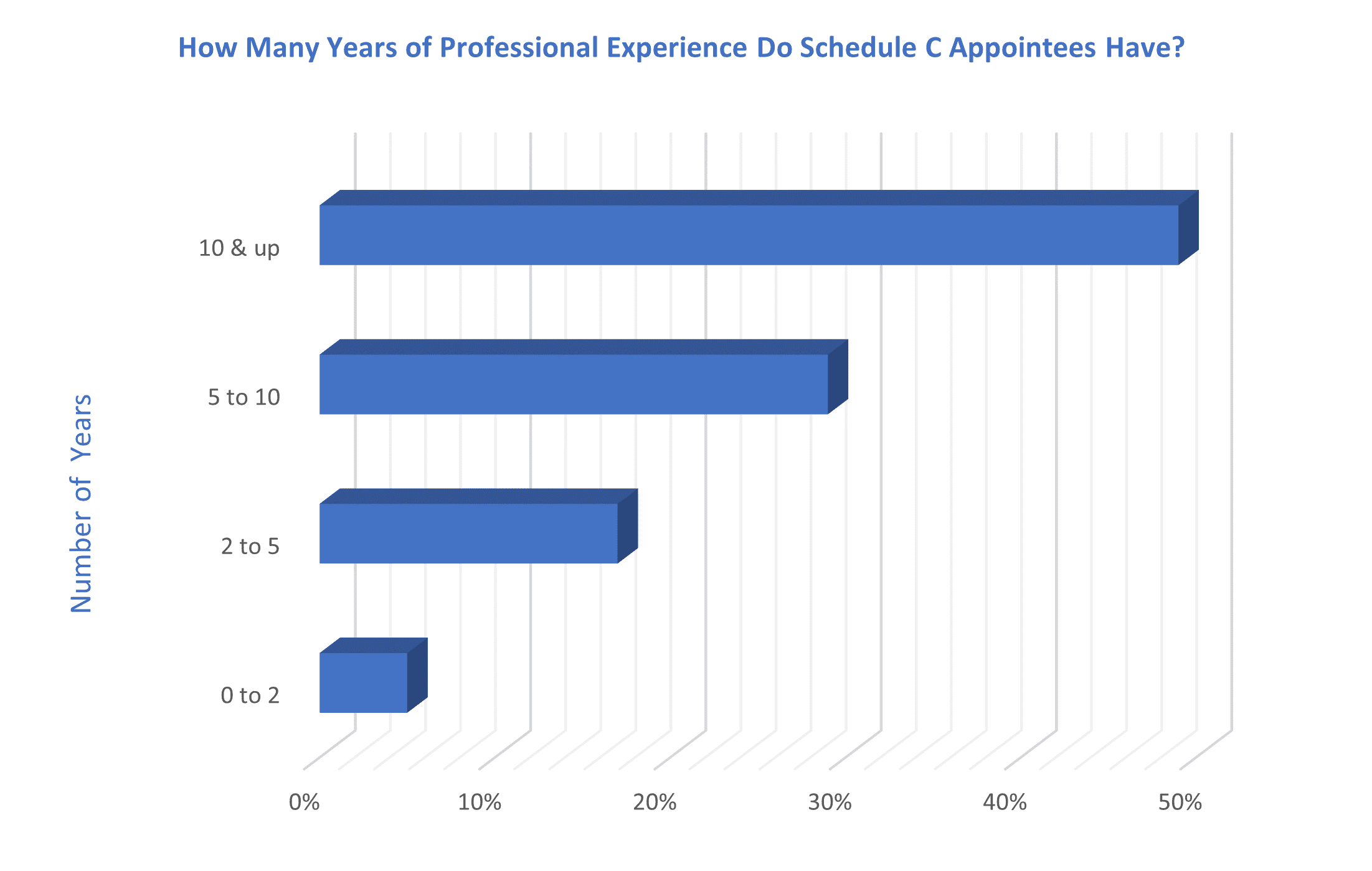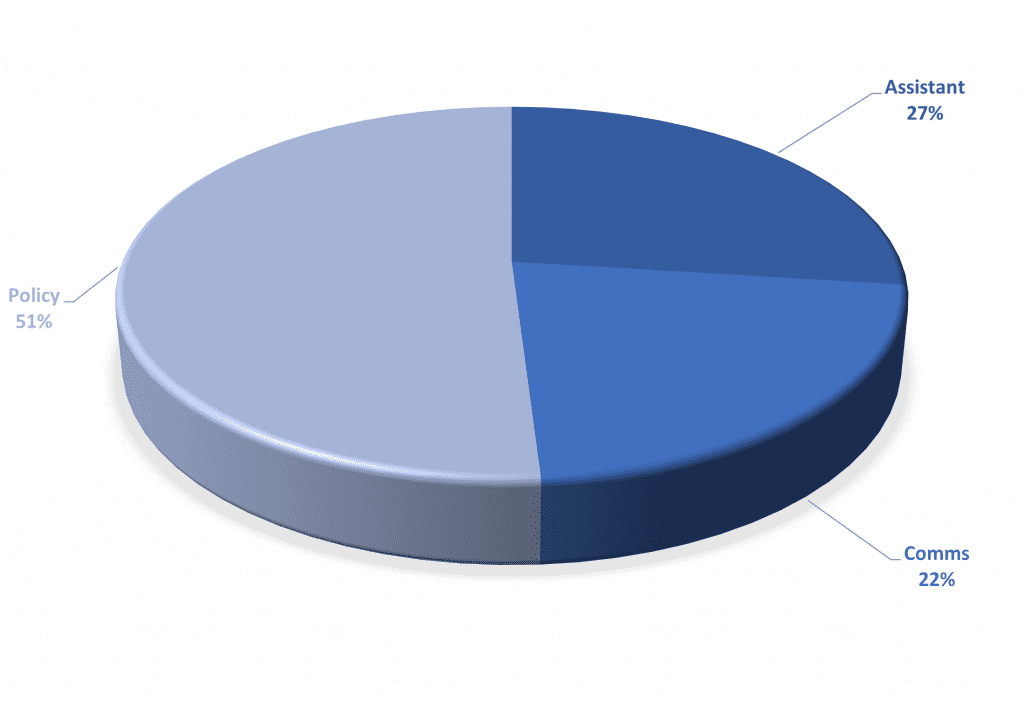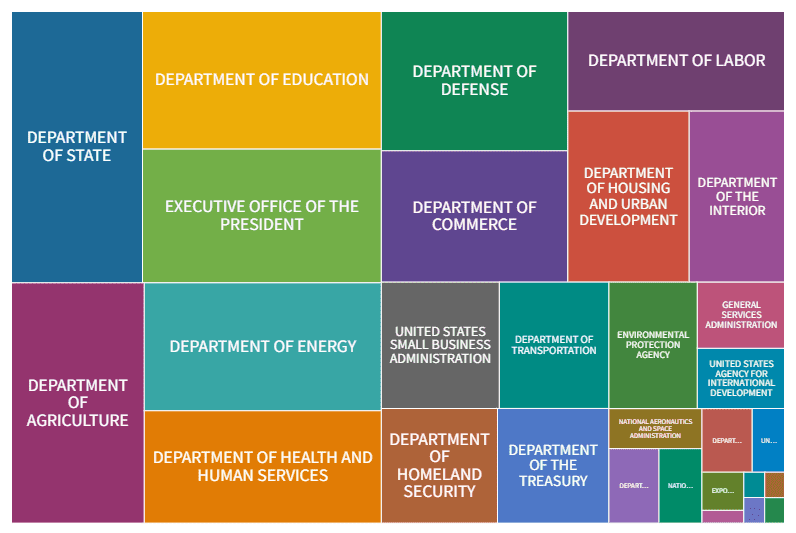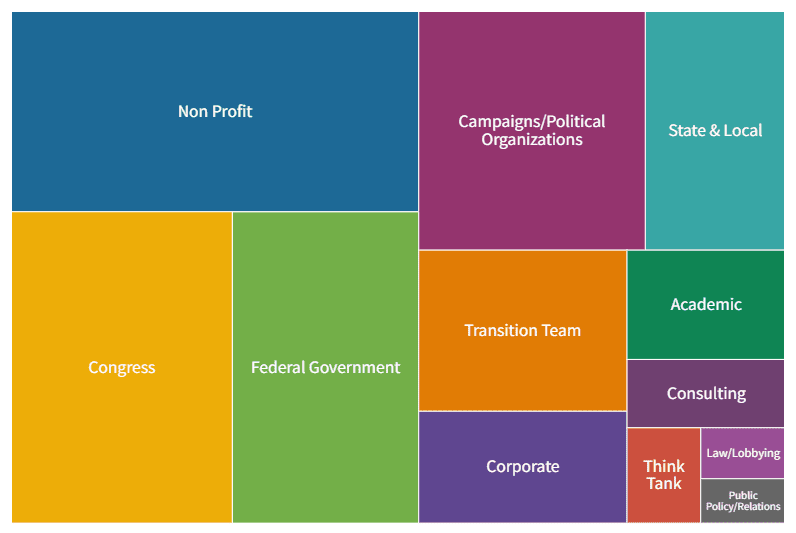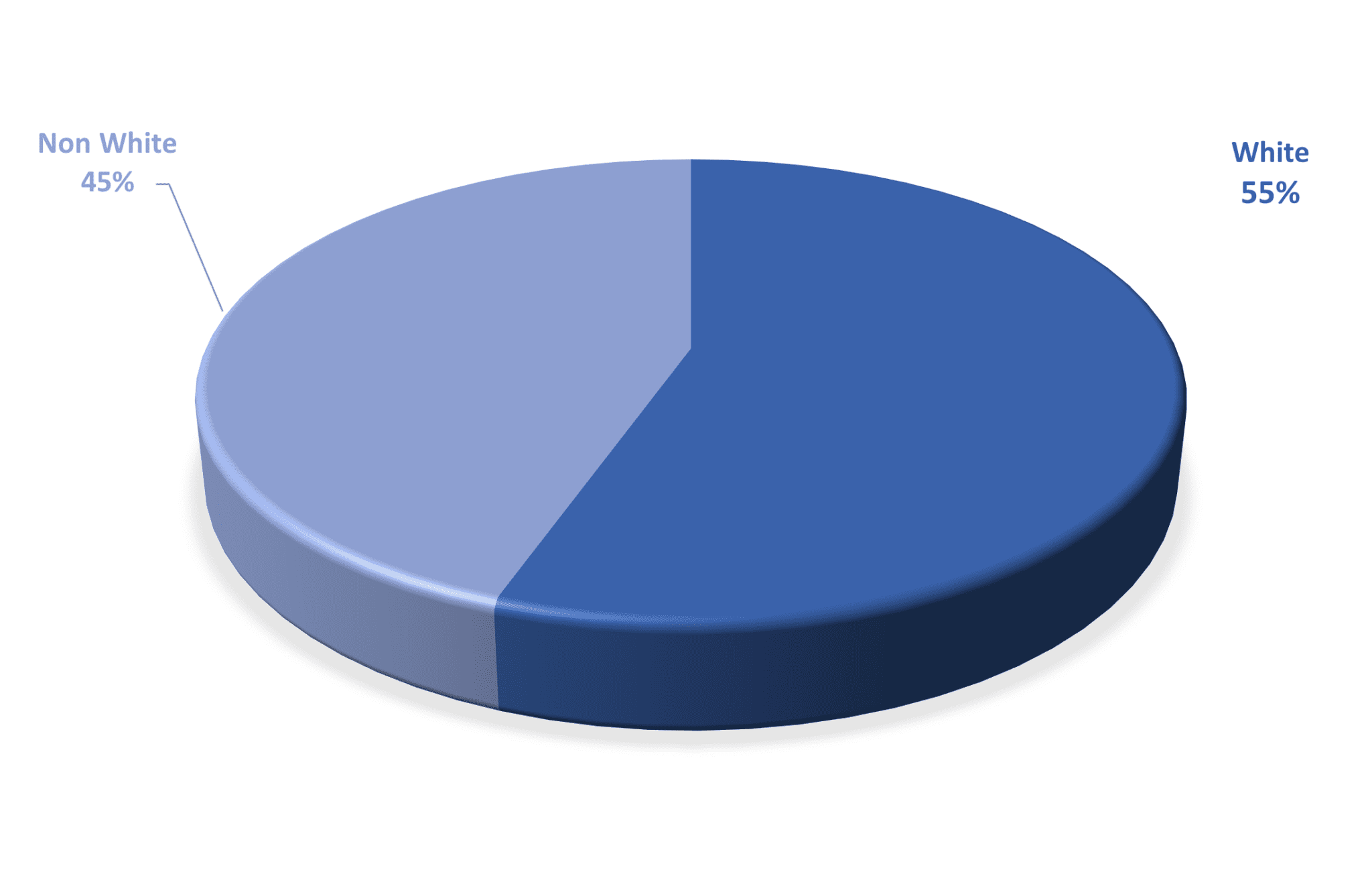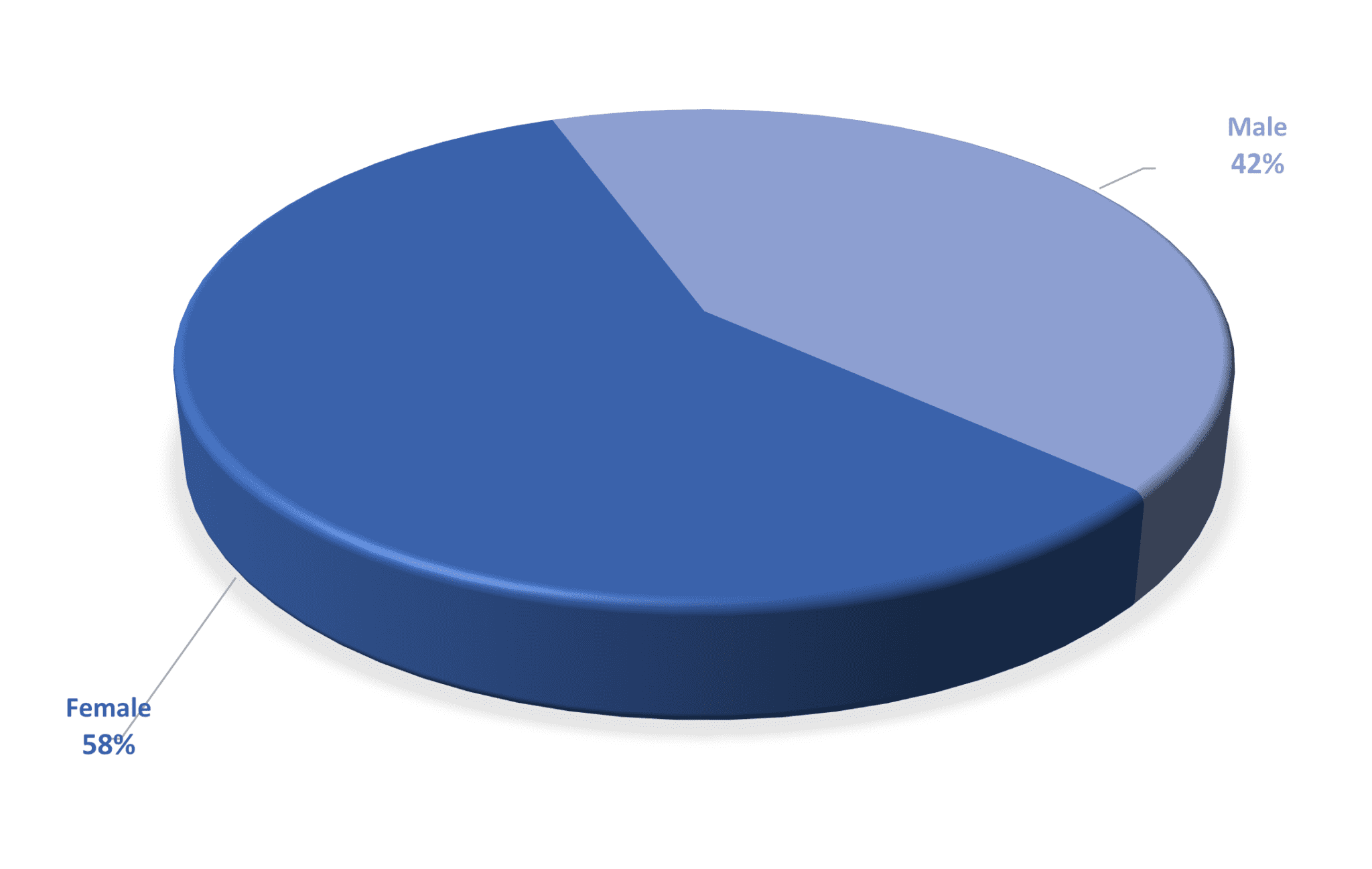by Leadership Connect Data Science Team, Salma Ismaiel, Ashley Weaver, Michael Crosby, and Caitlin Blocker
January 2022
Schedule C’s are often behind-the-scenes appointees that keep the wheels of government churning. They work as confidential assistants, policy-makers and communications staff. Our analysis provides important insights into who they are and includes their backgrounds. To learn more about the specifics of the Schedule C designation, see below.
Traditionally, Schedule C’s were only identifiable every four years via the Plum Book. When a change in administration happens, the Plum Book only captures the previous administration’s Schedule C appointees. Now, Leadership Connect has assembled the only comprehensive dataset of these appointees and updates it on a daily basis. Here is what we found out about them.
Key Findings
The average Schedule C is a female, white Harvard Graduate focused on policy with a decade of prior experience now working in the White House. Previously, they worked in the non-profit space and have a policy/arts degree.
Agencies: Schedule C’s work across every agency with the top five being State, Education, the White House, Energy, and HHS. Relative to other agencies, the DoD does not have a lot of Schedule C’s.
Race: 55% are white and 45% are non-white. For comparison, people of color make up 40% of the U.S. population and about 38% of the federal workforce.
Gender: 58% of appointees are female. This compares to 46% for the general workforce and 43% for the federal workforce.
What was their prior career?: Non-Profits, the Hill, and Campaigns are, in order, the top three sources of Schedule C’s.
What do they do?: Half of the roles of Schedule C appointees are policy focused, with an almost even split between communications and assistant-type roles.
Education: There is a 37% overlap between alum from the Biden-Harris Transition Staff and the current Schedule C appointees, with Harvard and UC being the top two schools for both. Only 27% of appointees have a STEM background versus the national average of 37%.
Previous Work and Experience: Surprisingly, appointees have just over 10 years of experience beyond undergraduate school. Within that time period, 57% of Schedule C’s have worked previously on the Hill and 49% have worked in a federal agency.
All things background: Education, Experience, Personal Demographics, and More
Harvard leads Schedule C hires
The top 25 Colleges/Universities of Biden’s Schedule C Appointees reflects alum who served on the Biden-Harris Transition team, overlapping at 37%. Harvard and UC are the top two schools for both groups. 12 out of 25 of the shared schools are in the Northeast, with the other top schools being University of California and Stanford.
Appointees with a policy focus have an average of 30% more professional experience than assistants and communications roles
Often, Schedule C’s are thought of as Confidential Assistants, but they represent just over a quarter of the group. The majority of Schedule C’s are policymakers, followed by assistants, then Communications staff.
The majority of Schedule C appointees were most recently in the Non-Profit sector, followed by on the Hill, in the Federal government, or at a campaign/political organization
Overall, current Schedule C’s came from a large cross-section of organizations before serving in the Biden administration, ranging across academic institutions, corporations, and all levels of government.
President Biden’s staff followed his pledge to hire more women and increase administration diversity
As for gender and ethnic diversity, the gap between white and non-white staffers narrowed with this administration. When Joe Biden was sworn into office, he pledged to increase the number of female appointees within Schedule C positions. Out of 745 appointees, females clock in at 58%.
What is a Schedule C Appointee?
Quick Facts
- Schedule C’s are policy or confidential roles.
- Schedule C’s do not require Senate approval, but must be requested and approved by the U.S. Office of Personnel Management (OPM) by each agency.
- Schedule C positions authorized by OPM are automatically revoked when the incumbent leaves the position.
Official Definition
The Plum Book defines Schedule C Appointees as positions that are excepted from the competitive service because of their confidential or policy-determining character. Most such positions are at grade 15 of the General Schedule or lower. Schedule C positions above the GS–15 level are either in the Senior Level (SL) personnel system or are specifically authorized in law. The decision concerning whether to place a position in Schedule C is made by the Director, U.S. Office of Personnel Management, upon agency request. Such requests are considered on a case-by-case basis. In addition to consideration of the justification submitted by the agency, OPM may conduct an independent review and analysis. In addition to the Schedule C positions authorized by the OPM Director, a limited number of positions may be placed under Schedule C by Executive Order of the President, or by legislation.
Requests for Schedule C exception are appropriate when:
(1) The position involves making or approving substantive policy recommendations; or
(2) The work of the position can be performed successfully only by someone with a thorough knowledge of and sympathy with the goals, priorities, and preferences of an official who has a confidential or policy determining relationship with the President or the agency head. There are special requirements for the types of superiors who are eligible for Schedule C secretaries. The immediate supervisor of a Schedule C position must be a Presidential appointee, a Senior Executive Service appointee (career or noncareer) occupying a General position, or a Schedule C appointee. The immediate supervisor may not occupy a position in the competitive service or a Career Reserved position in the Senior Executive Service.
The only time when OPM approval is not required for a Schedule C position is when a position is filled by a temporary Schedule C appointment during a Presidential transition, a change of agency head, or establishment of a new agency. Temporary Schedule C positions may be established for 120 days, with one extension of 120 days, under conditions prescribed by OPM. There is a limit on the number of such positions that can be established by an agency. New appointments may be made only during the one-year period beginning on the date of the agency head’s appointment, a new administration or establishment of a new agency.
By law, the agency head must certify to OPM that both Schedule C and temporary Schedule C positions are not being requested for the sole purpose of detailing the incumbent to the White House.
Agencies may fill Schedule C positions noncompetitively. Because of the confidential or policy-determining nature of Schedule C positions, the incumbents serve at the pleasure of the appointing authority (usually the agency head) and may be removed at any time. They are not covered under conduct-based or performance-removal procedures that apply to certain other excepted Service appointees.
Schedule C positions authorized by OPM are automatically revoked when the incumbent leaves the position (i.e., there is no such thing as a “vacant” Schedule C position).
How are Schedule C’s different than other appointees?
Schedule C’s do not have to go through the Senatorial confirmation process. Lower-level SC’s often come from the campaign or have specialties in specific policy areas. Roles range from special assistants to chief of staff. The most significant difference is that SC’s are approved for hire by OPM. They are directly picked by administration staffers and the agency that is involved asks for their role then they are approved. OPM and the White House Office of Presidential Personnel (PPO) approves the person – but the role for them exists when they are submitted.
Schedule C appointees, like all political appointees, serve at the pleasure of the President, may be dismissed at any time. While it is true that several Schedule C appointments go to campaign staffers, ties to the administration, or to people that have relationships with those in the cabinet positions. The positions also are offered to highly qualified individuals willing to work for the president.
What unique expertise do they bring?
In early adoption, Schedule C’s were lower-level positions that were awarded to young campaign staff to get their foot in the door.
Now, we see a range of GS levels up to 15 entering the roles as experts in a policy area or confidential roles.
Do Schedule C’s have to abide by the same lobbying roles as other appointees?
Yes. President Biden issued an Executive Order on Ethics Commitments by Executive Branch Personnel at the beginning of his term that limits the time and who SC’s can be lobbied by and for in the future. Per the new ethics statement, the limit is two years by former employers and for the Schedule C to lobby the Executive Branch.
What are some Schedule C roles?
Assistants
- Special
- Confidential Assistants
Policy
- Director
- Senior Advisor
Communications
- Press Secretary
- Speechwriter
- Digital Assistants
Why are the roles not “vacant”?
Schedule C’s are selected and hired through connections or past expertise. The position isn’t advertised on usajobs.gov like career jobs within the government. Just because someone leaves, doesn’t mean the job no longer exists. The EOP and federal agencies can then find a new person and request for OPM approval.
Lobbying
In general, meeting with a Schedule C will count as meeting with a Covered Official under the Lobbying Disclosure Act. However, there are exceptions related to role or whether a specific meeting will be disclosed in an agency’s normal course of operations.
Methodology
The Leadership Connect team used its own Schedule C data on Biden appointees, exclusive of board and commission members. This left a population of 745 appointees. To see the full list, you can access it here. Leadership Connect maintains the only set of Schedule C appointee data updated daily and is generated using a Washington, D.C.-based team of seasoned research analysts.
Share on social media:


